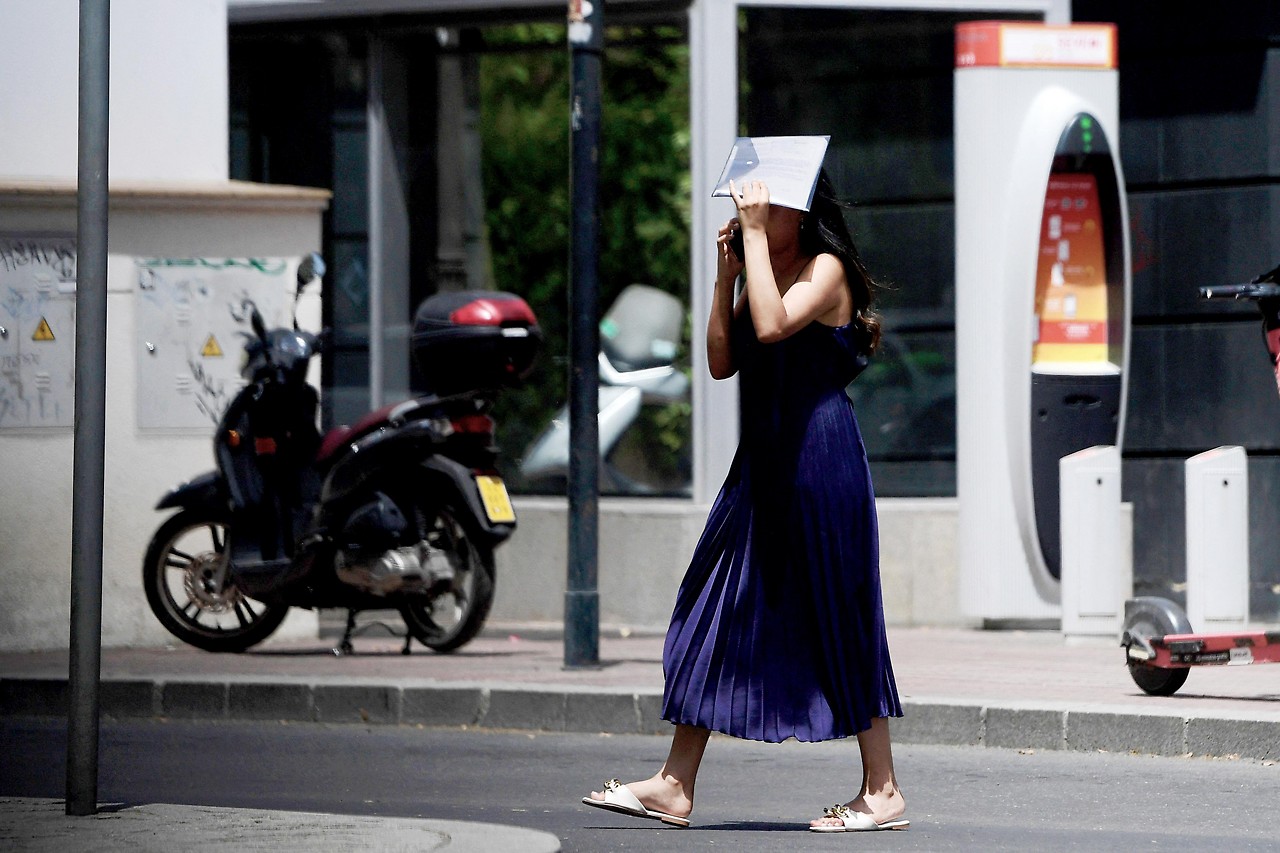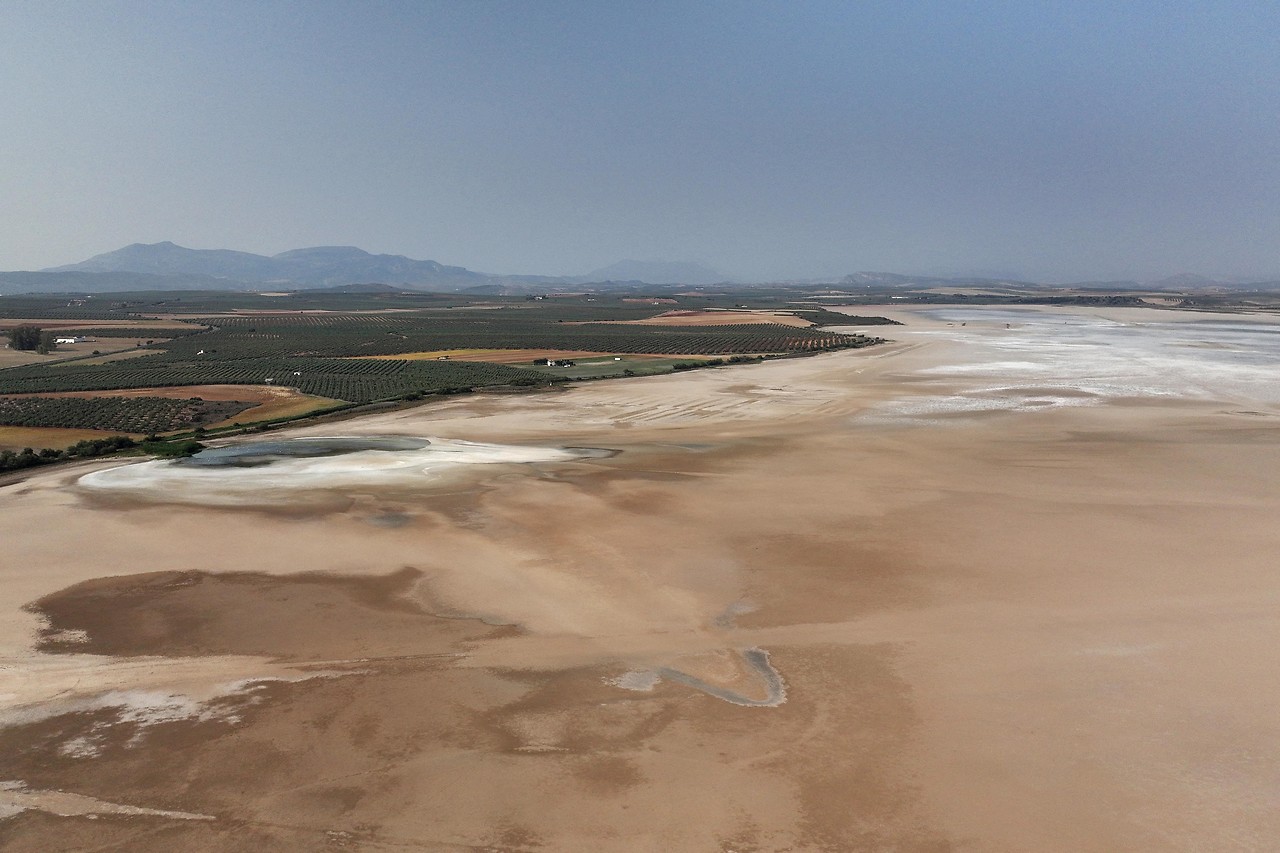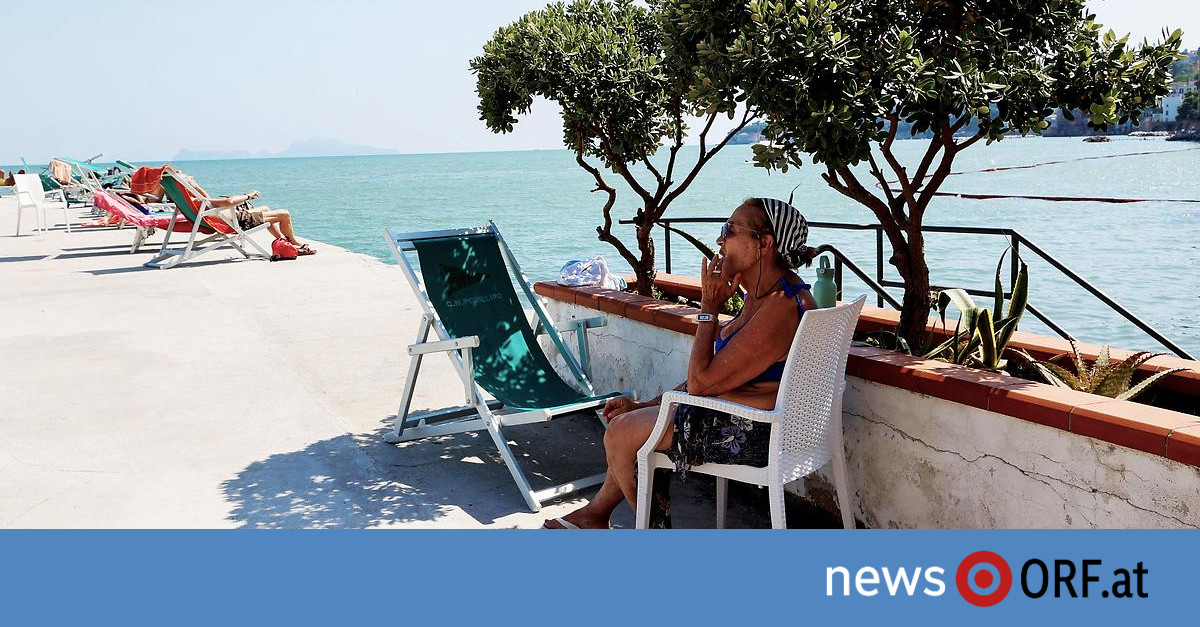A hot weekend ahead for people in Southern Europe. In many places temperatures rise to over 40 degrees – a stressful situation for people, animals and nature. People, especially high-risk groups, should stay home and refrain from outdoor activities. With such high temperatures, public life de facto stops from almost noon until evening.
Every activity turns into agony due to the soaring temperatures. According to the European Space Agency (ESA), the highest temperatures ever measured in Europe could be reached over the weekend. The European Space Agency assumes temperatures of up to 48 degrees in Sicily. So far, the European maximum is 48.8 degrees, which was reached in August 2021 in Florida, Sicily.

Italy: from one heat wave to another
Italy has been suffering from the heat for days. Because of “Cerbero” – the many-headed hellhound from Greek mythology – the 40-degree mark was crossed in Sardinia and in the Puglia region on Wednesday. The Ministry of Health announced that the highest heat alert level is in red for a number of cities.

There is no relief in sight: “Caronte” should follow “Cerbero” with even higher temperatures. The high pressure area is expected to reach extreme temperatures early next week – with temperatures of over 40 degrees in Rome, Florence and Bologna, for example. In parts of Sardinia there are up to 47 degrees, in Sicily according to ESA 48 degrees.
The Ministry of Health declared a heat emergency for major cities on Wednesday. According to the Meteorological Authority, 37 degrees were measured in the capital, Rome, and in the cities of Florence and Bologna. According to forecasts, this heat wave should not be the last of this summer. Then it can go down to other heights.

Greece: temperatures exceeding 40 degrees
In Greece, people are also preparing for extremes: in Athens, the thermometer is expected to rise to over 41 degrees. The Ministry of Culture has instructed managers of archaeological sites such as the Acropolis to temporarily close sites for several hours if it is too hot. Many communities keep air-conditioned halls open for shelter.
She added that special attention should be paid to the elderly, the sick and young children. In addition, pets and strays should not be forgotten – they must be provided with sufficient water everywhere. The Red Cross distributes bottles of water to thousands of visitors at the foot of the Acropolis. The Acropolis is closed during the hottest hours of the day due to the heat of the coming days.

Greece’s Citizens Protection Ministry has already warned of an increased fire risk in the coming week. Citizens Protection Minister Vassilis Kikilias warned that since the heat wave is accompanied by severe drought and strong winds blowing in many parts of the country from Monday, the risk of major fires will also increase.
Bulgaria: Orange Alert
In Bulgaria, this is the first heat wave this year: On Thursday, authorities announced the second highest alert level, Orange – with the hottest day since the start of the year. Maximum temperatures reach 41 degrees in Plovdiv and in Russia on the Danube River. According to meteorologists, the heat wave should hold the country firmly for about ten days. The weather remains more pleasant with around 32 degrees on the Black Sea coast.
Climate researcher: ‘Heat is the silent killer’
Climate researchers expect more heat records in southern Europe this summer. Blistering temperatures and hardly any cooling at night make daily life difficult for many, but the heat also poses a great danger to residents. “Heat is a silent killer,” warns Hannah Klock, a climatologist and professor at the University of Reading. Reuters news agency in an interview.
Turkish: Warning of high temperatures
Also in Turkey, the meteorological service warns of extreme heat at the weekend. In the west of the country, temperatures will rise in the coming days by ten degrees above the usual temperature for the season, and in other parts of the country they will reach six degrees above normal.
In the holiday region of Antalya, temperatures are expected to reach 42 degrees at the end of the week. Temperatures of up to 40 degrees can also be reached in the earthquake-ravaged southeastern regions of Turkey in February. This is particularly bitter for the people there: many are still living in emergency shelters.
Spain is groaning under the heat
In Spain, the second official heat wave this summer eased slightly on Thursday. The meteorological service AEMET, which warned several regions on Wednesday, declared a red alert in southern Gran Canaria.
However, it must still be very hot on the mainland, especially in parts of Andalusia with temperatures of up to 40 degrees. The heat wave had previously hit people hard in many regions of Spain. The highest temperatures of less than 45 degrees were recorded in Andalusia and Murcia. In Mallorca, too, the temperature temporarily rose above 40 degrees.
According to experts, parts of Spain are much drier than they have been for a thousand years. It was also the hottest and driest spring on record.
Consequences of lack of water
Families have to save water despite the sweltering heat. If the water supply is used up for the day, the evening’s dishes often remain unwashed, according to Bloomberg about cumulative problems from the lack of water. Air conditioning systems and appliances are only a limited solution, as they usually consume large amounts of electricity, and waste heat from the appliances is usually discharged to the outside. The Catalan capital, Barcelona, has had to be supplied with water brought in by large tankers over the past few years.

“34 consecutive months of drought”
Drought is having an increasing impact on agriculture and animal husbandry. Some companies are on the brink of collapse. “Toward the end of May and June, we had light rains that benefited agriculture and reduced the risk of forest fires,” Saray Sarroca, director of the Catalan Meteorological Agency, told Bloomberg. But Saraco told Bloomberg that it hadn’t rained enough “we need relief from 34 consecutive months of drought.”

Water tanks with questionable water levels
The reservoirs, the largest water reservoirs in the region, are also in a desolate state in terms of water. They currently only have a water level of about 30 percent, Bloomberg wrote. This is well below the Spanish average of 47.5 percent. In the last decade it was still an average of 68 percent. No change in the extremely tense situation is in sight.
Traffic jams caused by “disastrous tourism”
Many small businesses in the reservoir tourism sector, such as kayak rentals and food stands, as well as hotels, are on the brink of collapse, Bloomberg writes. Water sports are impossible in some parts, there is only hard, dry mud, according to Bloomberg. According to Bloomberg, the reservoirs have become a meeting place for “disaster tourists” — including traffic jams on arrival — on weekends.
This has caused dissatisfaction with those responsible for monitoring water quality. This would hinder them in their work, according to Bloomberg. Sometimes, visitors have also gotten stuck in the muddy banks, which has led the regional government to consider restricting access from the dry reservoirs.
Bloomberg said villages that were being supplied by the reservoirs should look to other sources, such as rivers, as water quality is affected by low water levels.
Extreme weather events are becoming more frequent
Although individual extreme events cannot be traced directly to a specific cause, according to the United Nations’ Intergovernmental Panel on Climate Change, it is clear that extreme weather events such as floods, storms, and heat are becoming more frequent and intense as a result of climate. calamity. That means rain and storms are getting heavier, heat waves are getting hotter and droughts are getting drier.

“Food practitioner. Bacon guru. Infuriatingly humble zombie enthusiast. Total student.”








More Stories
Kyiv: Russian Kursk offensive halted
US Presidential Election: Former US Government Officials Warn Against Donald Trump's Election
Netherlands wants to leave asylum system